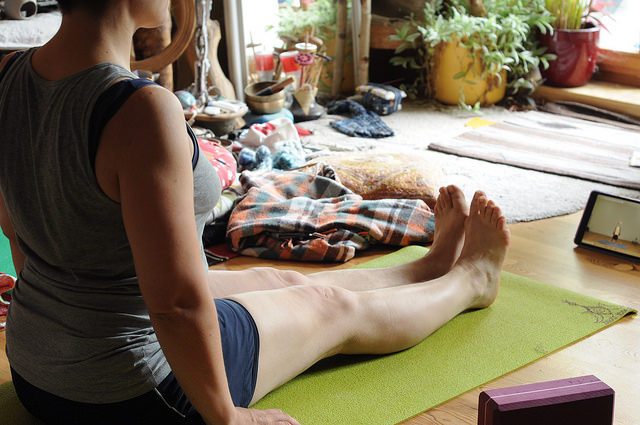With so many styles of yoga to choose from, it’s easy to feel overwhelmed what style of yoga is best for us to practice.
Establishing a consistent yoga practice was always a challenge for me.
In fact, the main reason I initially enrolled in a yoga teacher training was because I felt I needed to make a bigger commitment to a practice that was creating all kinds of positive changes in my life.
I hoped that by enrolling in a course at my local yoga studio that required me to practice a certain number of hours each week, I would deepen my understanding. I wanted to be more motivated to establish an effective daily practice.
And in a way teacher training did help me with this, but it also overwhelmed me with all the possible styles, sequences and techniques that could be practiced. The more I learned about the practice, the more confused I became.
I have a tendency to overcomplicate things. And in yoga there were so many elements to consider when approaching my practice that often I would still find myself rolling out my mat at home and staring at it blankly—not knowing where to start or what to do.
With every new teacher I learnt from, there was a different idea and approach that in some way conflicted with what I had learnt before.
I felt that I needed to be constantly expanding to my practice, embracing every new idea and concept that I was taught. I felt I had to start choreographing dance-like routines, standing on my hands and head, and continuously layering my practice with various elements in order for it to be meaningful—or even effective.
But it was only when I simplified my yoga practice (sticking the same thing each day) that I was able to sustain it. I started to experience the real benefits, both physically and mentally. Also, I found a teacher and style that truly resonated with me.
Rather than seeking to broaden my understanding of various yoga practices, I decided to deepen my understanding of the practice that I had chosen. I started to see and feel more clearly the physical and mental benefits when my yoga practice had a consistent style and approach.
I have learned that my yoga practice really doesn’t need to be complicated to be effective. My sequencing of asana doesn’t necessarily need to be creative, but rather it should be intelligent with each asana building upon and complimenting the other.
I can appreciate now that a simple round of sun salutations is a complete practice in and of itself.
It is an effective way of warming up, loosening and stretching all the joints, muscles and internal organs of the body. It also strengthens, tones and stimulates the circulatory, respiratory and digestive system. It can also be a wonderful moving meditation.
The classical standing poses (think Warrior 1, Triangle) are excellent ways to strengthen and stretch the legs in addition to opening the hips and releasing tension from the neck and shoulders.
You really don’t have to be a contortionist for your yoga practice to have greater value, meaning or physical and mental benefit. It’s OK to do the same exact practice each and every day.
Ultimately, I think that what we practice is really not as important as why we practice yoga and the way we practice it. It’s really about the the quality of attention that we bring to it and the awareness that we develop as a result.
Just keep it simple.
Author: Lauren Flaherty
Editor: Sara Kärpänen
Photo: distelfliege / Flickr Commons







Read 0 comments and reply